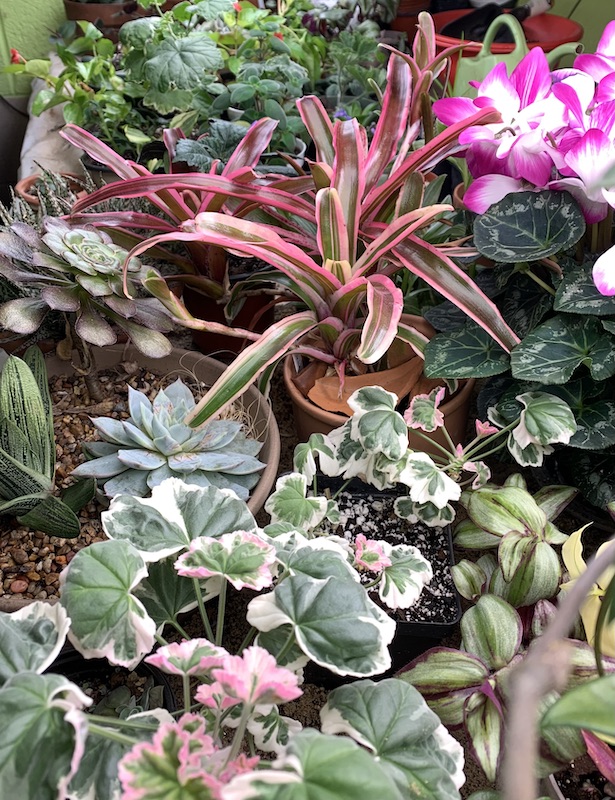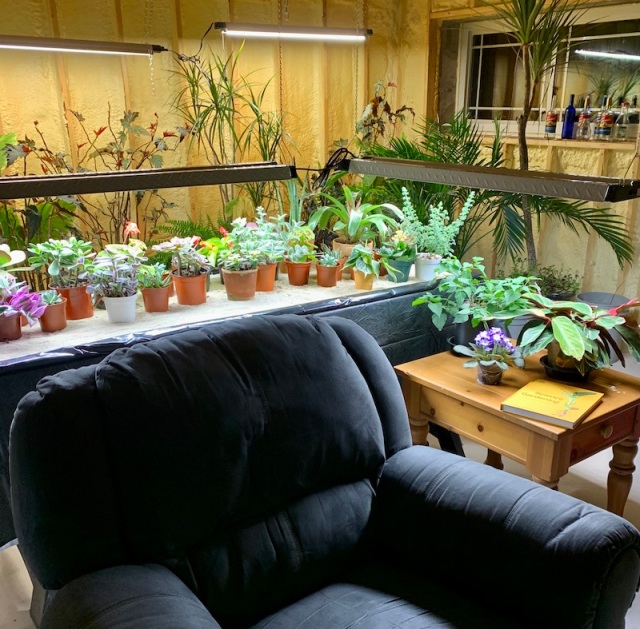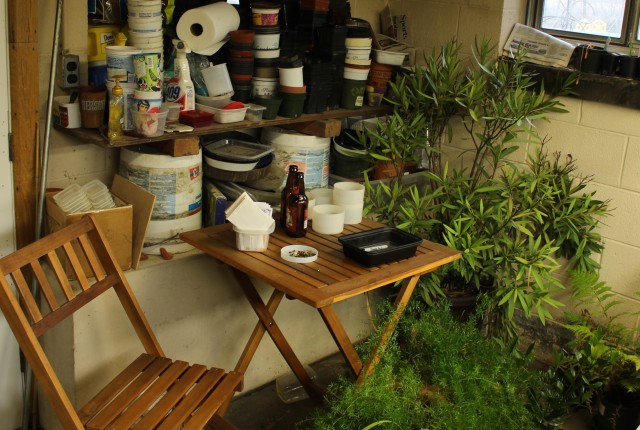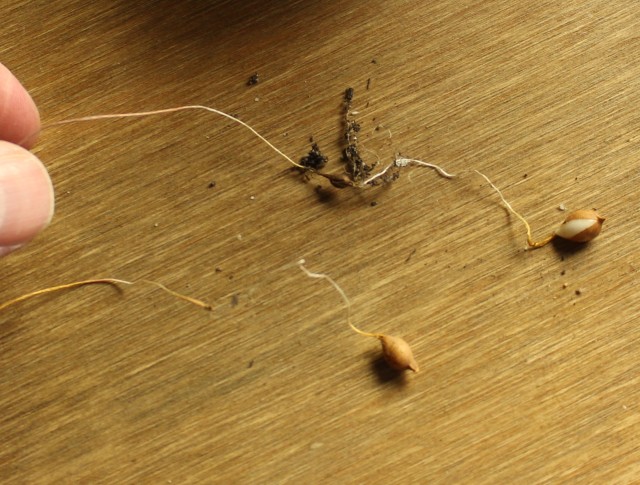I’m trapped inside again. It was a beautifully sunny three day weekend yet last week’s snow has refused to melt. The temperatures haven’t been particularly cold but each night is cold enough. Nothing is happening and I’m beside myself with boredom. So of course I’m again getting myself into trouble in the winter garden 🙂
Even just a few years back I used to treasure each shoot and sprout, and anything worth rooting or potting up was saved, but things have escalated and a firmer hand is needed. I spent my restless days aggressively trimming things back and tossing the extra cuttings into the compost bucket. You’ll have to take my word that even as I still pot up just a few cuttings here and there I still have way more than I need and nearly as many (but not quite as many) as a somewhat normal person would want.

I’m ridiculously obsessed with these everlasting florist cyclamen this winter. They’ve doubled and tripled in size and really enjoy the sometimes chilly, always sunny spots they have under the growlights.
So as winter tries to toughen up again this year I’ll just hide. On the ride to work I can see enough of the nightly argument between open water and the freezing weather, but so far it’s a stalemate which the open water is bound to win by next week. That’s when I’m declaring a winner and a full on start to snowdrop season but in the meantime I see two more cold nights to get through.
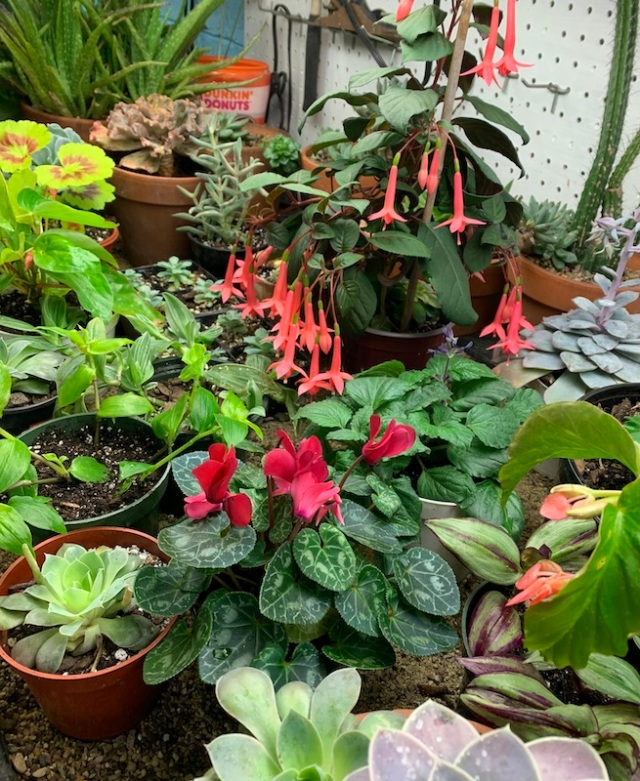
A bargain red cyclamen was snapped up after Valentine’s Day and a fuchsia cutting from last summer is looking quite nice under this light.
Friday and Saturday will be cold, but after that it’s nothing but spring. Early spring, some would say, some would even say late winter, but I’m ready to get started, even if ‘getting started’ means a lot of poking around and looking rather than any kind of energetic to-do list.
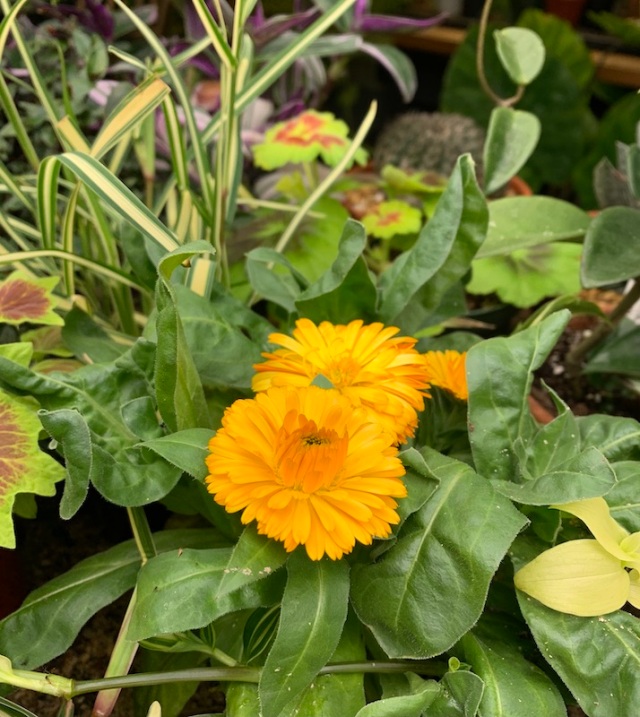
Calendula “test” seedlings which were raised under the new LED shoplights are doing nicely although I did kill one through a little too much water after a little too much drought…
Maybe dividing and replanting snowdrops will be a nice start. I’ve been making up new labels this week and am nearly up to 2016 plantings so as you can guess that’s moving along nicely, even though with 8+ years in the same spot I’ve kind of learned who’s who but you never know when the memory’s going to start fading… plus they’re lovely new labels so I’m sure all the visitors will appreciate it.
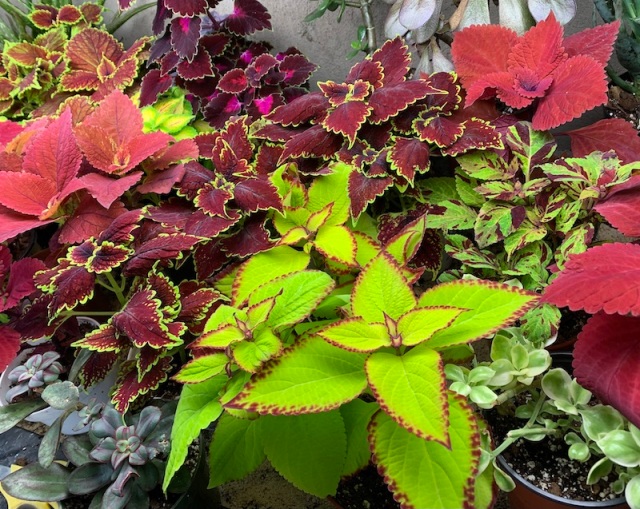
Coleus cutting season will start this week. By May I should have a couple flats ready to plant out and who doesn’t need a few flats of coleus to plant out?
I did possibly get into a little extra trouble though. Once I had an opening into the new basement space I thought what the heck let me hang a few lights and throw some spare furniture back there even though it’s years from being finished… and that’s where I am now. Even unheated it’s a remarkably popular area and I’m worried it will be difficult to evict visitors once I begin a serious effort towards creating my basement greenhouse/ solarium/ orangerie. You would think there isn’t another spare room in the house or another whole other side to the basement. Trust me it wasn’t my idea to use up so much other space for a “gym” or “craft area” or “kids room”, I’ve always just wanted more room for plants 😉
What harm is there in a few houseplants or more accurately basementplants? I think my track record of frugality, self-restraint, and modesty in all things plants speaks for itself and I’m sure a few more lights in a new space hardly mean anything. I’ll barely remember they’re down there when spring arrives next week. Snowdrop season and spring fever are practically synonymous with good judgement and responsible decisions so not to worry!
Have a great two more days of winter 😉
